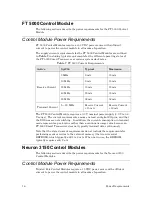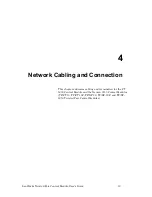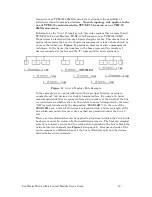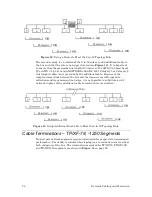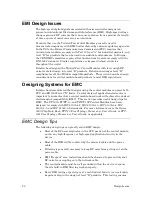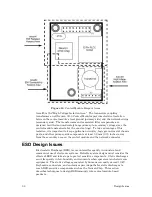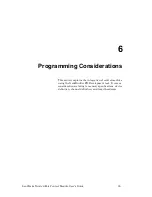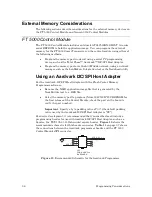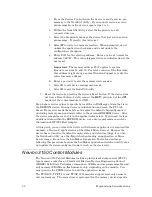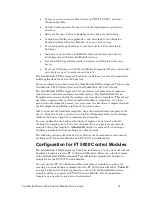
28
Design Issues
EMI Design Issues
The high-speed digital signals associated with microcontroller designs can
generate unintentional Electromagnetic Interference (EMI). High-speed voltage
changes generate RF currents that can cause radiation from a product if a length
of wire or piece of metal can serve as an antenna.
Products that use the Twisted Pair Control Modules generally need to
demonstrate compliance with EMI limits enforced by various regulatory agencies.
In the USA, the Federal Communications Commission (FCC) requires that
unintentional radiators comply with Part 15 level “A” for industrial products, and
level “B” for products that can be used in residential environments. In Europe,
the CENELEC committee requires that unintentional radiators comply with the
EN 55022 standard. Similar regulations are imposed in most countries
throughout the world.
Echelon has designed the Twisted Pair Control Modules with low enough RF
noise levels for design into level “B” products. Echelon encourages level “B”
compliance for all L
ON
W
ORKS
compatible products. This section describes design
considerations for control module-based products to meet EMI regulations.
Designing Systems for EMC
Echelon has demonstrated that designs using the control modules can meet both
FCC and EN55022 level “B” limits. Careful design of application electronics is
important to guarantee that a control module-based node will achieve the desired
electromagnet compatibility (EMC). This section provides useful design tips for
EMC. The FT 5000, TP/FT-10, and TP/FT-10F Control Modules have been
designed to comply with IEC 61000-4-2, IEC 61000-4-3, IEC 61000-4-4, IEC
61000-4-5, and IEC 61000-4-6 standards. For more information, see the
Series
5000 Chip Data Book
,
FTT-10 Free Topology Transceiver User's Guide
, or
FTT-
10A Free Topology Transceiver User's Guide
, as applicable.
EMC Design Tips
The following design tips can greatly aid in EMC design:
•
Most of the RF noise originates in the CPU portion of the control module,
and in any high-frequency or high-speed application circuitry in the
device.
•
Most of the EMI will be radiated by the network cable and the power
cable.
•
Filtering is generally necessary to keep RF noise from getting out on the
power cable.
•
EMI “Keepout” area restrictions should be observed to prevent internal
RF noise from coupling onto the network cable.
•
The control module must be well grounded within the device to ensure
that its built-in EMI filtering works properly.
•
Early EMI testing of prototypes at a certified test facility is an extremely
important step in the design of level “B” products. This testing ensures
Содержание LONWORKS FT 5000
Страница 1: ...LONWORKS Twisted Pair Control Module User s Guide 078 0015 01F...
Страница 18: ...10 Mechanical Considerations Figure 5 Neuron 3150 Control Module Mechanical Footprint...
Страница 20: ...12 Mechanical Considerations Figure 8 Vertical Component Profile for the Control Modules...
Страница 22: ......
Страница 26: ......
Страница 34: ......
Страница 55: ...www echelon com...



